
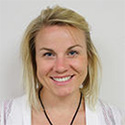
Assistant Professor - Department of Biological Sciences, Florida International University-Biscayne Bay Campus
Heather Bracken-Grissom is an Assistant Professor at Florida International University in the Marine Sciences Program, where she has a molecular evolution research lab and teaches Invertebrate Zoology and Genetics. Heather is interested in the evolution of marine invertebrates with an emphasis on decapod crustaceans (crabs, lobsters, and shrimp). This subject allows her to address issues related to their biodiversity, genetics, ecology, biogeography, development, and conservation. Much of her work has been conducted in the Gulf of Mexico, Caribbean, western Atlantic, and eastern Pacific Ocean, where she has organized and participated in several major research expeditions. Her current role in the NOAA Office of Ocean Exploration and Research grant will be to use molecular techniques to study the visual systems of deep-sea crustaceans. Specifically, she is interested in the genetics behind how organisms can detect light in the deep sea. Her interest in crustaceans blossomed early during her undergraduate years at the University of California, Santa Barbara and through her graduate (University of Louisiana at Lafayette) and postdoctoral studies (Brigham Young University).
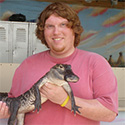
Research Assistant - Nova Southeastern University
Eric Burdett received his B.S. in Biology, as well as minors in Chemistry and Marine Science, from Slippery Rock University of Pennsylvania. At Slippery Rock, he completed an Independent Study focusing on behavioral responses of firemouth cichlids. The cold winters of landlocked Pennsylvania do not provide the ideal climate to study marine biology, so he moved to Florida in 2012. He enrolled at the Nova Southeastern University Oceanographic Center in January of 2012 and took a great interest in deep-sea biology. His current research, with advisor Tamara Frank, focuses on the distribution of the deep-sea shrimp family Oplophoridae, and their depth and spatial distributions in the northeastern Gulf of Mexico. Eric is also involved in the Nova Southeastern University Graduate Peer Mentor Program where he helps new students adjust to life in graduate school, as well as to living in south Florida.
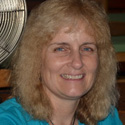
Chief Scientist - Nova Southeastern University, Halmos College of Natural Sciences and Oceanography
Tamara Frank received her Ph.D. degree in Aquatic Biology from the University of California, Santa Barbara, working on the visual ecology of deep-sea crustaceans. She completed post-doctoral fellowships in neurophysiology at the University of Connecticut Medical School and Hatfield Marine Science Center in Oregon, before returning to the deep-sea world on a post-doctoral fellowship at Harbor Branch Oceanographic Institution in 1992. Discovering that Florida is the only state in the continental U.S. that met her temperature requirements, she has lived in Florida ever since. Much of her research has been on the visual ecology of deep-sea animals, studying adaptations to both downwelling light and bioluminescence. Her work has been funded by the National Science Foundation, the NOAA National Undersea Research Program, and the NOAA Office of Ocean Exploration and Research. She has been chief scientist on 50 research cruises and participated on 40 more as a lucky hitchhiker, conducting work in the Gulf of Maine and off the coasts of Florida, Hawaii, California, the Bahamas, the Canary Islands, Cuba, Costa Rica, and Samoa. In addition to her research, she teaches Human Anatomy and Physiology to undergraduates and marine physiology and deep-sea biology to graduates.

Graduate Student - Nova Southeastern University
Brenna Hays’ (B.S. Biology, University of Central Florida, 2011; M.S. candidate, Nova Southeastern University) love for marine biology began with her first trip, at age 10, to the National Aquarium in Baltimore. While attending Rollins College, she participated in a 10-day field study to Barbados where she studied subtidal and intertidal invertebrate populations. She then transferred to the University of Central Florida where she pursued her non-academic passion of collegiate cheerleading and earned her Bachelor’s degree. Since arriving at Nova Southeastern University, she has had the opportunity to dive in Karl Stanley’s submersible, Idabel, and present preliminary results of her thesis work at the 15th International Echinoderm Conference, where she won third prize for oral student presentations. Her current thesis work deals with the skeletal morphology of crinoids and possible reconciliations with new molecular data.

Professor of Biology - Duke University
Originally trained in math and art, Sönke Johnsen has studied vision, camouflage, signaling, bioluminescence, and ocean optics for the last 25 years.He is particularly interested in vision and camouflage in the open ocean, but has also worked on coastal and land-based species, magnetic orientation, vision at night, and human cataracts. His field work usually involves open-ocean research cruises that use SCUBA and deep-sea submersibles. In addition to exploring the optical and visual tricks that animals perform, Dr. Johnsen is interested in improving communication between biologists and physicists and between scientists and artists. Outreach is a strong focus and his research has been presented in numerous magazines, newspapers, and television shows, including Finding Nemo, The Magic Treehouse, and the poetry of John Updike. He has also written two books, The Optics of Life and Visual Ecology, and is starting a new one on life in the open ocean with the working title, The Great Wide Open. In his spare time, he is an avid hiker and nature photographer and is considering buying a horse farm.

Professor - Halmos College of Natural Sciences and Oceanography, Nova Southeastern University
Charles is a marine invertebrate zoologist who specializes in the evolution and ecology of crinoids (sea lilies and feather stars) and the ecology of deep-sea coral and rocky-bottom communities. Since his first dive aboard Alvin in 1975, he has led or participated in over 30 research submersible and remotely operated vehicle cruises funded by the National Science Foundation, NOAA, the U.S. Navy, Department of Energy, and National Geographic, among others. He has written or co-authored over 60 peer-reviewed scientific journal articles and book chapters and has 45 years’ experience as a scientific illustrator. Charles also wrote and hosted the nature television program Messing with Nature .

Ph.D. Student - Department of Biological Sciences, Florida International University-Biscayne Bay Campus
Jorge L. Pérez-Moreno is currently a Ph.D. student in the Bracken-Grissom Lab at Florida International University. His research interests mainly focus around invertebrates in extreme environments (i.e., caves, deep sea) and the use of next-generation DNA sequencing to study their evolution, adaptations, diversity, and interactions with their environment. Jorge is currently involved in a project examining the genetic basis behind bioluminescence and visual systems of deep-sea crustaceans. He previously co-authored a study on this topic, where molecular phylogenetic and transcriptomic analyses were used to investigate evolution of light-detection and bioluminescence in oplophorid shrimp. After becoming particularly interested in decapod crustaceans during his time at the University of Queensland (Australia), Jorge decided to move to Florida and join the Bracken-Grissom lab – the perfect environment to develop his passion for marine life and molecular evolution.

Web Developer - NOAA Office of Ocean Exploration and Research
James Rawsthorne has been a web developer for the NOAA Office of Ocean Exploration and Research for the past three years, where he enjoys assisting scientists in publishing their studies and research to the web and supporting telepresence technology. He is a graduate of Flagler College with a degree in Communications and Political Science. He previously worked at the National Renewable Energy Laboratory for 13 years as a lead web developer in charge of integration and content development for their Science on a Sphere program and as a multimedia developer at Mathematica Policy Research in Washington, DC.
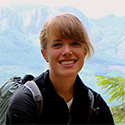
Graduate Student - Duke University
Katie Thomas is a graduate student at Duke University working with Dr. Sönke Johnsen. She holds a B.S. in marine biology from the University of Oregon. For her Ph.D., she is studying vision and bioluminescence in deep-sea cephalopods and is particularly interested in how animals in dimly lit environments accomplish visual tasks and visual communication. Katie loves shipboard life and looks forward to learning from all of her colleagues on the research cruise. She will be assisting Dr. Johnsen with photographic documentation and spectral measurements of bioluminescence from the organisms that are collected and also hopes to collect squid specimens for her research.
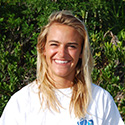
Graduate Student - Florida State University
Mackellar “Mackey” Violich received a B.S. in Marine Resource Management and Environmental Economics from the University of California, Berkeley in 2013, and is currently pursuing a master's degree in Oceanography from Florida State University under the guidance of Dr. Dean Grubbs. She is interested in the biodiversity and assemblages of deep-sea organisms.

CEO and Senior Scientist - Ocean Research & Conservation Association
Edie Widder is a MacArthur Fellow, a deep-sea explorer, and ocean conservationist. A specialist in bioluminescence, she has been a leader in developing new ways to explore the deep sea. Her innovations have produced footage of rare sharks, squid, jellyfish, and crustaceans, and led to the the first recordings of the giant squid, Architeuthis, in its natural habitat. Her research has been featured in BBC, PBS, Discovery Channel, and National Geographic television productions. She is a founder and CEO of the Ocean Research & Conservation Association, a not-for-profit that develops technological solutions to ocean conservation challenges.